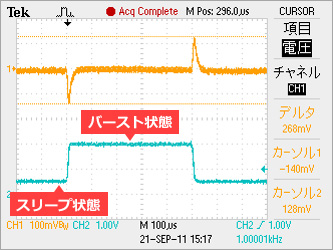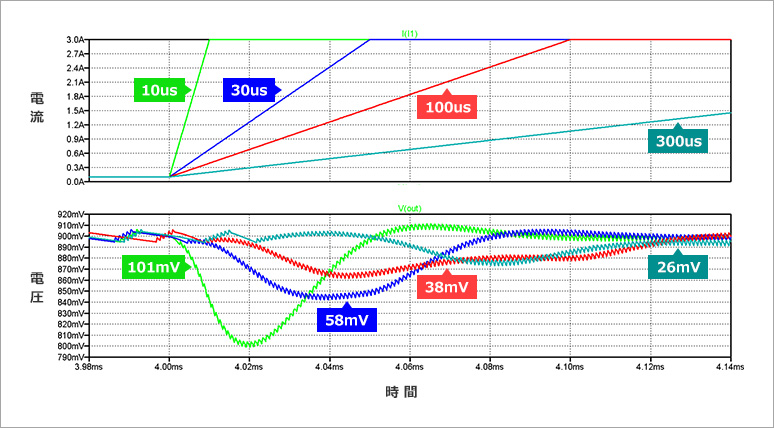This is Sasaki in charge of power supply dock technology.
In this column, I would like to introduce some examples of problems related to power supplies that I encountered multiple times during various customer support sessions.
This time, I would like to answer various questions about "fast response" and "fast transient response" of power supplies for FPGAs that many people ask.
What is fast response?

What are the characteristics of "fast response" and "fast transient response"?

This is the characteristic of voltage fluctuation when current fluctuates, which is often seen in the data sheets of power supply ICs and module products (Figure 1).
``Fast response'' and ``fast transient response'' mean that the power supply responds quickly when the FPGA changes from one steady state to another.
For example, when the FPGA transitions from sleep state (1. small current) to burst state (2. large current), the current and voltage change as shown in Figure 1. The change in voltage when the current value changes determines the responsiveness of the power supply.

What causes voltage fluctuations?

Is FPGA current variation important?

It is not enough to simply look at the current change.
Figure 2 shows the power supply voltage drop over time for the FPGA current change. (result of simulation with Spice)
When the current changes at a rate of 10 μs, the voltage drops by 101 mV (yellow-green).
However, if the current change time is 300μs, the voltage drop becomes as small as 26mV (light blue).
In other words, the faster the current value is changed, the larger the voltage drop.

What effect does voltage fluctuation have on the FPGA?

Will voltage drop be a problem?

AC-like voltage fluctuations, such as voltage drops, affect the jitter characteristics of FPGA transceivers.
If you want to improve the jitter characteristics of your transceiver, it is desirable to select a power supply that has a small voltage drop (high-speed response).
In other words, FPGA logic design circuits that require faster current changes require a faster response power supply.
How to improve the characteristics around the power supply

How can I improve the responsiveness of the power supply circuit? ?

Ground inductance in power circuits adversely affects responsiveness.
Therefore, it is important to design a power supply using a product with the shortest ground wiring pattern.
To optimize the ground pattern, it is recommended to select leadless package module products.
Summary

・If the gradient of FPGA current fluctuation is large (current changes at high speed), a power supply with faster response is required. (With the internal logic design of the FPGA, the fluctuation of the current value of the FPGA will increase depending on the switching of the clock frequency and the size of the circuit to be operated.)
・If you want to improve the responsiveness of the power supply circuit, a leadless package module product is recommended.
Click here for recommended articles/materials
Click here for recommended seminars/workshops
Analog solution power supply design seminar
Analog solution thermal design seminar
Basic seminar on power supplies for digital circuit designers


